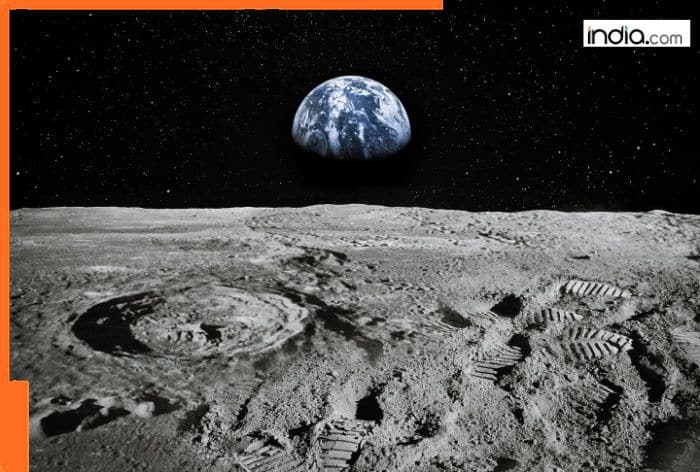Even if the Prospect Moon mission goes perfectly, it doesn’t mean companies will immediately start mining the moon. It’s like finding a treasure map—success is a big step, but there’s still a lot to figure out before anyone digs for helium-3.

A startup company is planning to set up mining activities on the Moon to collect a rare material. This special substance is important for the future because it can be used in building powerful quantum computers and in producing clean energy through nuclear fusion. The company believes that the Moon has rich amounts of this rare resource, which is hard to find on Earth. If successful, their mission could help make advanced technologies more common and could also open up a new chapter in space-based industries.
On March 16, Firefly Aerospace’s Blue Ghost mission successfully landed on the moon, kicking off a new chapter for private companies exploring space. This means businesses, not just governments, are now sending their own spacecraft to the lunar surface. It’s a big step forward, showing that private teams can tackle moon missions with simpler, more affordable technology. This could open the door to more space adventures in the future, making the moon more accessible for research and exploration.
Interlune, started by a former Blue Origin worker and an astronaut from the Apollo 17 mission, plans to send its first spacecraft to the moon in 2027. If everything works out, they hope to make more trips after that. Unlike some missions that focus only on science, Interlune has a unique goal: they want to collect helium-3, a rare substance on the moon that could be valuable for energy production back on Earth. Think of it like digging for a special kind of treasure that might power our future.
Helium-3 is a rare kind of helium, the gas we know for making balloons float. Unlike regular helium, helium-3 has a unique structure with just one neutron—a tiny particle in its core—and fewer parts overall. This makes it super special and hard to find on Earth, but scientists think there’s more of it locked in the moon’s soil. Why does it matter? Helium-3 could be a game-changer for creating clean energy. Imagine it as a super-efficient fuel for futuristic power plants, called nuclear fusion reactors, that produce lots of energy with barely any waste.
That single neutron also lets helium-3 get extremely cold without turning solid, which is perfect for high-tech stuff like quantum computers. These are like ultra-smart computers that can solve problems too tough for today’s machines. So, while we don’t use helium-3 much yet, it’s like a magic ingredient that could power our world and boost tomorrow’s technology in amazing ways.
Helium-4, the common type of helium we use for things like balloons, is easy to find on Earth. But its cousin, helium-3, which has just one neutron instead of two, is super rare here. Think of helium-3 like a hard-to-find gem—it’s not naturally lying around like helium-4. That’s why scientists are excited about looking for it on the moon, where it might be more common, trapped in the soil.
Helium-3 is super rare on Earth—way less common than the usual helium we see in balloons. It’s so hard to find that for every tiny bit of helium-3, there’s a million times more regular helium. That rarity makes it crazy valuable. Interlune says just one kilogram of helium-3 could cost about $20 million! Imagine a small bag of this stuff being worth more than a big house, all because it’s so special and could help power the future.
However, helium-3 isn’t so rare in other parts of the solar system. The Sun, which acts like a massive natural fusion reactor, constantly sends out streams of solar wind—these are high-energy particles that include large amounts of helium-3.
Earth’s magnetic field acts like a protective shield, blocking most of the solar wind. But the Moon doesn’t have this kind of protection, so helium-3 from the solar wind keeps hitting and building up on its surface over time.
Over time, the helium-3 from the solar wind gets trapped in tiny bubbles (small pockets of gas) inside rocks found in the Moon’s upper soil layers, which are called regolith. Regolith is a loose, dusty layer of soil and broken rocks that covers the Moon’s surface, formed by billions of years of meteor impacts.
If a company were to collect these helium-3 gas pockets from the Moon, it could create a valuable new source of material for some of the world’s most advanced and costly technologies back on Earth—like clean energy and powerful computers.
According to PopularScience.com, a company called Interlune, based in Seattle and started in 2020, wants to show that the Moon has enough helium-3 to make large-scale mining there worth it. Their goal is to become the first to set up full lunar mining operations.
Interlune is backed by several private investors and also received a $375,000 grant from the U.S . Department of Energy in 2024. On March 11, during the annual Lunar and Planetary Science Conference (LPSC), the company’s chief scientist shared their latest progress on a project called Prospect Moon, which focuses on exploring helium-3 resources on the Moon.
The Prospect Moon mission, planned to launch no sooner than 2027, will use a lunar lander built by another company through NASA’s Commercial Lunar Payload Services (CLPS) program. In simple terms, this means Interlune isn’t making its own moon-landing spacecraft. Instead, it’s teaming up with NASA to hire a company that specializes in building landers to get their mission to the moon. It’s like renting a ride to deliver their equipment to the lunar surface!
For the mission, the team will load the lunar lander with a few special tools: a device to scoop up moon soil (called regolith), a machine to process helium-3, a tool to analyze what’s in the soil (like a high-tech scanner), and a camera that takes detailed pictures in different colors. These will be sent to a part of the moon they haven’t picked yet. It’s like packing a toolbox to dig, study, and photograph the moon’s surface to find that rare helium-3!
Even if the Prospect Moon mission goes perfectly, it doesn’t mean companies will immediately start mining the moon. It’s like finding a treasure map—success is a big step, but there’s still a lot to figure out before anyone digs for helium-3.
Nobody knows exactly how much helium-3 is in the moon’s soil, called regolith. The only samples we have are from the Apollo missions, and they only had tiny amounts of helium-3. But here’s the thing—some of that helium-3 might have escaped during the rough trip back to Earth, so the moon could still have enough to make mining worth it. It’s like checking a piggy bank: we found a few coins before, but there might be more hidden inside if we look closer.
There’s also the question of who owns the moon. Even though Apollo astronauts planted U.S. flags up there, no country officially controls it. If someone wants to start a big, long-term project like mining helium-3—which could make a lot of money—it’s likely to spark a huge global argument about who gets to claim parts of the moon. It’s like a giant playground with no clear rules, and everyone might start fighting over who gets to play where.
Mining on the moon could mess up its surface, just like mining on Earth can harm landscapes here. Digging for helium-3 might leave scars or change the moon’s look forever. But according to New Scientist, at least one person connected to Interlune doesn’t seem too worried about it. It’s like saying, “Sure, we might make a mess, but we don’t think it’s a big deal.”
“Since there’s no life on the moon, why bother protecting its environment?” said Clive Neal, a scientist advising Interlune without pay, in early March.
Still, Clive Neal admitted there are other things to think about before Interlune starts mining the moon. The moon means a lot to people all over the world—culturally and spiritually—so messing it up with mining before humans even have a permanent base there could upset many folks. It’s like scribbling on a beautiful painting that everyone loves, and some might say it’s not worth it if we’re not even living there yet.
“Different cultures have their own views about the moon, and changing its surface affects them too, so they should be included in the discussion,” Clive Neal said. It’s like making a big decision about a place everyone cares about—you need to listen to what others think before digging in.
No matter what challenges come up, big moon mining projects are still years away. That gives Interlune, world leaders, governments, and people who care about the environment plenty of time to start talking about how to do it right. It’s like planning a huge family trip—there’s time to figure out what everyone wants before heading out.
(The author, Girish Linganna, is an award-winning Science Writer and a Defence, Aerospace & Political Analyst based in Bengaluru. He is also Director of ADD Engineering Components, India, Pvt. Ltd, a subsidiary of ADD Engineering GmbH, Germany. You can reach him, at: girishlinganna@gmail.com)















.png?w=700&c=0)

.jpg?w=700&c=0)






































